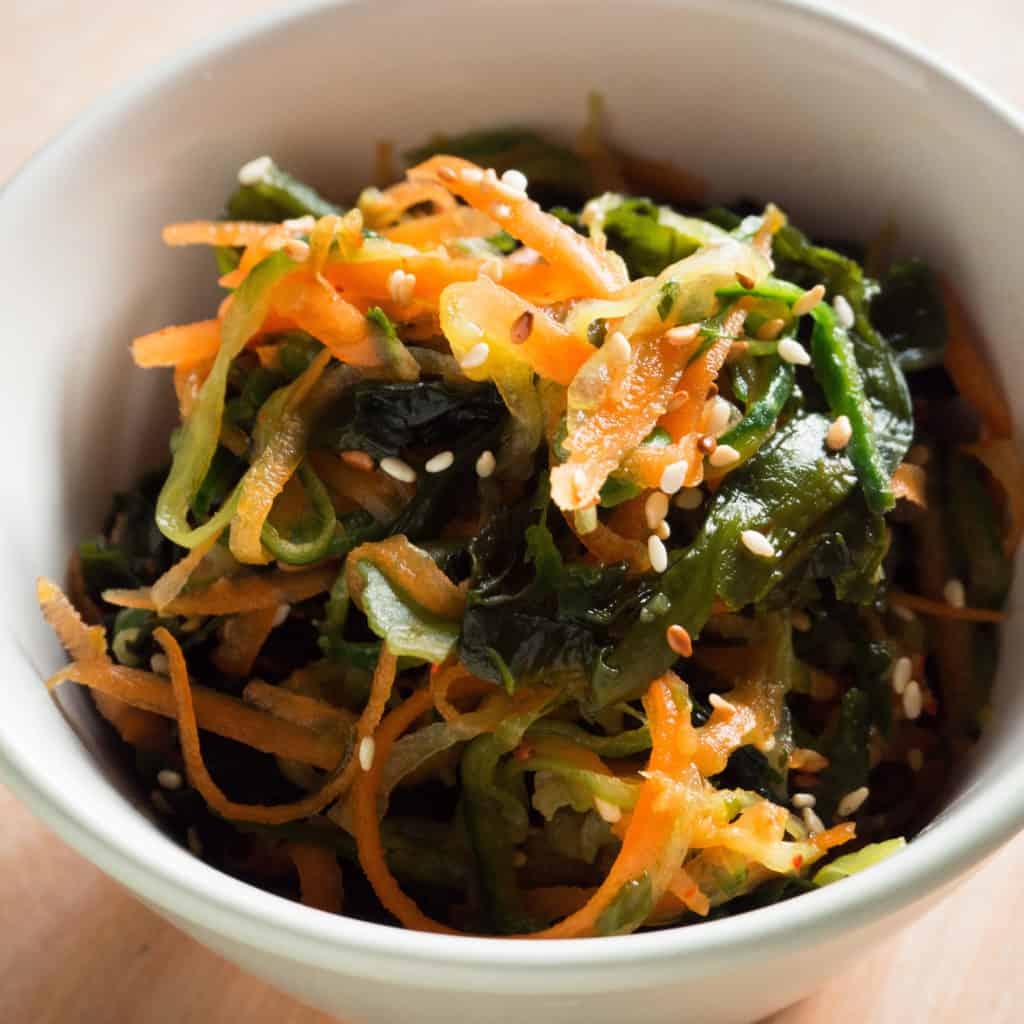
Cucumber, Seaweed and Carrot Salad is a great way to serve cucumber and carrots – two great kitchen staples but sometimes you forget how good they can be and how versatile they can be. Seaweed is much underused – it tastes great and is rich in B vitamins and minerals – particularly riboflavin, folate, calcium, magnesium, manganese. This salad is really substantial and so tasty with the tang of tamari with lime and sesame.
Find the full Cucumber, Seaweed and Carrot Salad recipe here.
Perfect for lunch, light dinner dish etc. Serve with Vietnamese Summer Rolls.
Wakame is possibly the most popular of the edible seaweeds, with a slightly sweet flavour. Wakame is often found in miso soups. Wakame is available from many supermarkets and online.
Preparation
Difficulty easy-medium
Preparation time 40 minutes
Cooking time 0 minutes
Find the full Cucumber, Seaweed and Carrot Salad recipe here.
Allergens
The Cucumber, Seaweed and Carrot Salad is gluten-free and vegan as well as…
Celery free
Coconut free
Garlic free
Lupin free
Mustard free
Nightshade free*
Onion free
Peanut free
Tree nut free.
*Leave out the chilli/ gochugaru to make this dish nightshade free.
About
Wakame is edible seaweed (sometimes called sea mustard in the UK – though I have to admit I have never heard this term!). The latin name is undaria pinnatifida. Wakame has a subtly sweet flavour and is most often served in soups (e.g. miso) and salads. It is sold in its dried form and needs to be hydrated before use. It swells to around double its size on soaking. Quite slippery in texture but mild to taste wakame is super-versatile.
Wakame is a rich source of eicosapentaenoic acid, an omega-3 fatty acid. At over 400 milligrams per 100 kilo calories. It has one of the higher nutrient-to-energy ratios for this nutrient, and among the very highest for a vegetarian source. A typical 10–20 gram (1–2 tablespoon) serving of wakame contains roughly 3.75 to 7.5 kilo caloires and provides 15–30 milligrmas of omega-3 fatty acids. Wakame also has high levels of sodium, calcium, iodine, thiamine and niacin. The high levels of sodium and iodine in seaweed in general means that consumption should not be excessive. In Japan consumption per head of population of seaweed is approximately 5 grams per day, which causes no problems in combination with their wider diet and lifestyle.
Sea-farmers have grown wakame in Japan for centuries. Native to cold temperate coastal areas of Japan, Korea, and China, in recent decades it has become established in temperate regions around the world, including New Zealand, the United States, North-West Europe, Spain, Italy, Argentina, Australia and Mexico. The Invasive Species Specialist Group has listed Undaria pinnatifida on its list of 100 worst globally invasive species. Not great. The spread is doubtless related to farming and to increasing ocean temperatures.